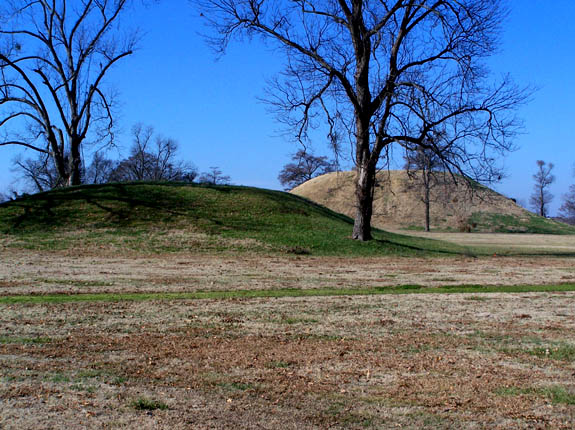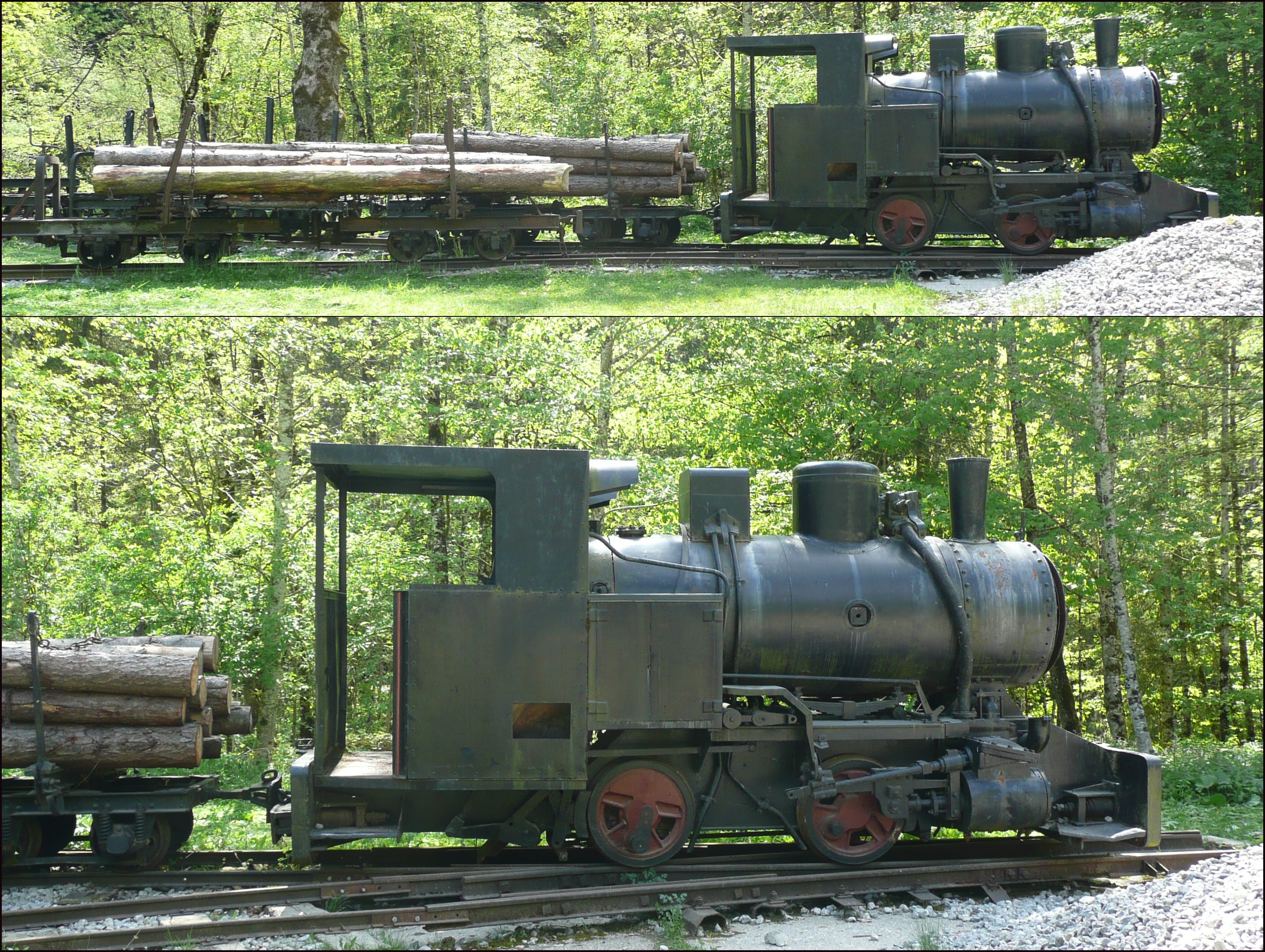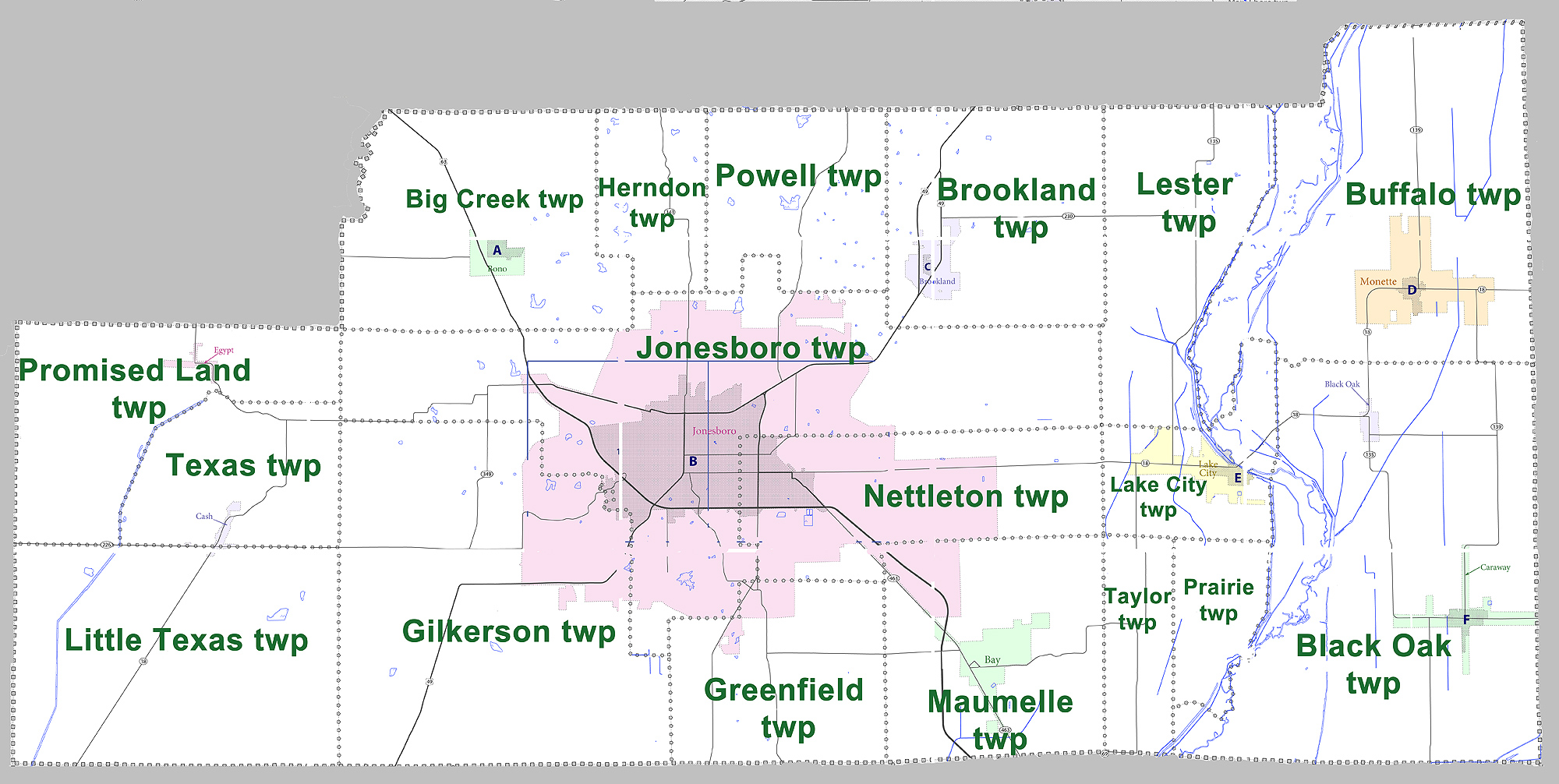|
Paragould Southeastern Railway
The Paragould Southeastern Railway (“PSR”), originally the Paragould and Buffalo Island Railway, was an industrial line initially started to carry timber products from lands east of Paragould, Arkansas, into town. It acquired its first trackage in 1887, and eventually extended its line to Blytheville, Arkansas, over 37 miles from Paragould. The trackage was absorbed into the St. Louis Southwestern Railway, known as the “Cotton Belt,” in 1914. History Paragould and Buffalo Island Railway The city of Paragould was in a lumbering area, and the need was for a rail line to bring logs to the mills located there. The Paragould Stave Manufacturing Company built a tramway east from Paragould, the line being about 4 miles long, narrow-gauge, and reputedly laid with wooden rails. The Paragould and Buffalo Island Railway was incorporated October 11, 1887. It acquired the tramway that month, and in 1888 extended it about 4 miles to Bertig, Arkansas. To avoid construction proble ... [...More Info...] [...Related Items...] OR: [Wikipedia] [Google] [Baidu] |
Narrow-gauge Railway
A narrow-gauge railway (narrow-gauge railroad in the US) is a railway with a track gauge (distance between the rails) narrower than . Most narrow-gauge railways are between and . Since narrow-gauge railways are usually built with tighter curves, smaller structure gauges, and lighter rails; they can be less costly to build, equip, and operate than standard- or broad-gauge railways (particularly in mountainous or difficult terrain). Lower-cost narrow-gauge railways are often used in mountainous terrain, where engineering savings can be substantial. Lower-cost narrow-gauge railways are often built to serve industries as well as sparsely populated communities where the traffic potential would not justify the cost of a standard- or broad-gauge line. Narrow-gauge railways have specialised use in mines and other environments where a small structure gauge necessitates a small loading gauge. In some countries, narrow gauge is the standard: Japan, Indonesia, Taiwan, New Zealand, ... [...More Info...] [...Related Items...] OR: [Wikipedia] [Google] [Baidu] |
Arkansas
Arkansas ( ) is a landlocked state in the West South Central region of the Southern United States. It borders Missouri to the north, Tennessee and Mississippi to the east, Louisiana to the south, Texas to the southwest, and Oklahoma to the west. Its name derives from the Osage language, and refers to their relatives, the Quapaw people. The state's diverse geography ranges from the mountainous regions of the Ozark and Ouachita Mountains, which make up the U.S. Interior Highlands, to the densely forested land in the south known as the Arkansas Timberlands, to the eastern lowlands along the Mississippi River and the Arkansas Delta. Previously part of French Louisiana and the Louisiana Purchase, the Territory of Arkansas was admitted to the Union as the 25th state on June 15, 1836. Much of the Delta had been developed for cotton plantations, and landowners there largely depended on enslaved African Americans' labor. In 1861, Arkansas seceded from the United St ... [...More Info...] [...Related Items...] OR: [Wikipedia] [Google] [Baidu] |
Missouri
Missouri (''see #Etymology and pronunciation, pronunciation'') is a U.S. state, state in the Midwestern United States, Midwestern region of the United States. Ranking List of U.S. states and territories by area, 21st in land area, it borders Iowa to the north, Illinois, Kentucky and Tennessee to the east, Arkansas to the south and Oklahoma, Kansas, and Nebraska to the west. In the south are the Ozarks, a forested highland, providing timber, minerals, and recreation. At 1.5 billion years old, the St. Francois Mountains are among the oldest in the world. The Missouri River, after which the state is named, flows through the center and into the Mississippi River, which makes up the eastern border. With over six million residents, it is the List of U.S. states and territories by population, 19th-most populous state of the country. The largest urban areas are St. Louis, Kansas City, Missouri, Kansas City, Springfield, Missouri, Springfield, and Columbia, Missouri, Columbia. The Cap ... [...More Info...] [...Related Items...] OR: [Wikipedia] [Google] [Baidu] |
Paragould, Arkansas
Paragould is a city in and the county seat of Greene County, Arkansas, Greene County, and the 19th-largest city in Arkansas, in the United States. The city is located in northeastern Arkansas on the eastern edge of Crowley's Ridge, a geologic anomaly contained within the Arkansas Delta. Paragould is the principal city of the Paragould, Arkansas United States micropolitan area, Micropolitan Statistical Area and is also a part of the Jonesboro-Paragould Combined Statistical Area. The population of Paragould was 29,537 as of the 2020 United States census, 2020 Census, compared to 26,113 at the 2010 United States census, 2010 census. History The city's name is a Blend word, blend combining the last names of competing railroad magnates J. W. Paramore and Jay Gould. Paramore's St. Louis Southwestern Railway, Texas & St. Louis Railway (later the Cotton Belt) and Gould's St. Louis, Iron Mountain and Southern Railway (later the Missouri Pacific) intersected here in 1882. A group of citize ... [...More Info...] [...Related Items...] OR: [Wikipedia] [Google] [Baidu] |
Blytheville, Arkansas
Blytheville is one of two county seat, county seats of and the largest city in Mississippi County, Arkansas, Mississippi County, Arkansas, United States. It is approximately north of West Memphis, Arkansas, West Memphis. The population was 13,406 at the 2020 United States census, 2020 census, down from 15,620 in 2010 United States census, 2010. History Blytheville was founded by Methodism, Methodist clergyman Henry T. Blythe in 1879. It received a post office the same year, was incorporated in 1889, and became the county seat for the northern half of Mississippi County (Chickasawba District) in 1901. Blytheville received telephone service and electricity in 1903, and natural gas service in 1950. Forestry was an early industry, spurred by the massive harvesting of lumber needed to rebuild Chicago following the Great Chicago Fire, Great Fire of 1871. The lumber industry brought sawmills and a rowdy crowd, and the area was known for its disreputable saloon culture during the 1880s ... [...More Info...] [...Related Items...] OR: [Wikipedia] [Google] [Baidu] |
Tramway (industrial)
Tramways are lightly laid industrial railways, often not intended to be permanent. Originally, rolling stock could be pushed by humans, pulled by animals (especially horses and mules), cable-hauled by a stationary engine, or pulled by small, light locomotives. Tramways can exist in many forms; sometimes simply tracks temporarily placed on the ground to transport materials around a factory, mine or quarry. Many use narrow-gauge railway technology, but because tramway infrastructure is not intended to support the weight of vehicles used on railways of wider track gauge, the infrastructure can be built using less substantial materials, enabling considerable cost savings. The term "tramway" is not used in North America, but is commonly used in the United Kingdom and elsewhere where British railway terminology and practices influenced management practices, terminologies and railway cultures, such as Australia, New Zealand, and those parts of Asia, Africa and South America that c ... [...More Info...] [...Related Items...] OR: [Wikipedia] [Google] [Baidu] |
Buffalo Island
Buffalo Island is a local name given to western Mississippi County and eastern Craighead County, Arkansas. It consists of the land south of Big Lake between the Little River (not to be confused with a stream of the same name in southwestern Arkansas) and the St. Francis River, containing the communities of Manila (Mississippi County), Monette (Craighead County), Leachville (Mississippi County), Black Oak (Craighead County), and Caraway (Craighead County)."{{cite web, last=Lendennie, first=Pat, title=Buffalo Island, url=http://www.encyclopediaofarkansas.net/encyclopedia/entry-detail.aspx?entryID=3071, publisher=Encyclopedia of Arkansas History & Culture, accessdate=5 Feb 2013 Towns & cities ; Arkansas Arkansas ( ) is a landlocked state in the West South Central region of the Southern United States. It borders Missouri to the north, Tennessee and Mississippi to the east, Louisiana to the south, Texas to the southwest, and Oklahoma ... : *Black Oak *Caraway *L ... [...More Info...] [...Related Items...] OR: [Wikipedia] [Google] [Baidu] |
Craighead County, Arkansas
Craighead County is a County (United States), county located in the U.S. state of Arkansas. As of the 2020 United States census, 2020 census, the population was 111,231. The county has two county seats — Jonesboro, Arkansas, Jonesboro and Lake City, Arkansas, Lake City. Craighead County is Arkansas's 58th county, formed on February 19, 1859, and named for state Senator Thomas Craighead (politician), Thomas Craighead. It is one of several dry county, dry counties within the state of Arkansas, in which the sale of alcoholic beverages is largely prohibited. Craighead County is included in Jonesboro–Paragould Combined Statistical Area. History Craighead County was part of the territory claimed for France on April 9, 1682, by René Robert Cavelier, Sieur de La Salle, who laid claim to all of the land drained by the Mississippi River and its tributaries. LaSalle's claim was named Louisiana in honor of Louis XIV of France, Louis XIV, King of France. The Treaty of Fontainebleau (1 ... [...More Info...] [...Related Items...] OR: [Wikipedia] [Google] [Baidu] |
Mississippi County, Arkansas
Mississippi County is the easternmost county in the U.S. state of Arkansas. As of the 2020 census, the population was 40,685. There are two county seats, Blytheville and Osceola. The county is named for the Mississippi River which borders the county to the east. Mississippi County is part of the First Congressional District in Arkansas. The Blytheville, AR Micropolitan Statistical Area includes all of Mississippi County. History Pre-European Exploration Extant early settlements include the Eaker Site and the Sherman Mound. 1812 New Madrid Earthquake Local oral tradition held that prior to the major earthquakes of 1812, the lands in Mississippi County were higher in elevation compared to now and were not prone to flooding. Though the earthquake was named for New Madrid, Missouri, as that was the only town in the area with any population, the actual epicenter of the quake was three miles below what is now Blytheville, Arkansas. Antebellum Period American settl ... [...More Info...] [...Related Items...] OR: [Wikipedia] [Google] [Baidu] |
Standard-gauge Railway
A standard-gauge railway is a railway with a track gauge of . The standard gauge is also called Stephenson gauge (after George Stephenson), international gauge, UIC gauge, uniform gauge, normal gauge in Europe, and SGR in East Africa. It is the most widely used track gauge around the world, with about 55% of the lines in the world using it. All high-speed rail lines use standard gauge except those in Russia, Finland, Uzbekistan, and some line sections in Spain. The distance between the inside edges of the heads of the rails is defined to be 1,435 mm except in the United States, Canada, and on some heritage British lines, where it is defined in U.S. customary/ British Imperial units as exactly "four feet eight and one half inches", which is equivalent to 1,435.1mm. History As railways developed and expanded, one of the key issues was the track gauge (the distance, or width, between the inner sides of the rail heads) to be used, as the wheels of the rolling stock (locomoti ... [...More Info...] [...Related Items...] OR: [Wikipedia] [Google] [Baidu] |
Cardwell, Missouri
Cardwell is a city in southwest Dunklin County, Missouri, United States. The 2024 recorded population is 526. The community was named after Frank Cardwell, an Arkansas banker who lent money to the town's founders. The current mayor of Cardwell is Mike Clark and the current aldermen are Harvey Beasley, Randall Duda, Sherry Horner, and Randy Dunigan. Kim Heit serves as the City Clerk. History On January 1, 1893, the Paragould Southeastern Railway, originally a tramway, began construction to extend its mainline from Paragould, Arkansas eastward into the Missouri Bootheel. By November 1894, the line had been graded to the new townsite and it was being advertised in local papers that plotts were being sold. On January 19, 1895, the first train was reported to have arrived in Cardwell, and platting continued into the following year by the Bertig family of Paragould, AR, and a post office was established soon after. A school district was established for Cardwell in 1899, and that July ... [...More Info...] [...Related Items...] OR: [Wikipedia] [Google] [Baidu] |
Hornersville, Missouri
Hornersville is a city in Dunklin County, Missouri, United States, founded in 1840. The population was 537 at the 2020 census. History Hornersville was platted in 1842. The city was named for its founder, Dr. William H. Horner, who had settled there in 1832. A post office called Hornersville has been in operation since 1875. Hornersville got train service in 1897 from Paragould, Arkansas when the Paragould Southeastern Railway was completed into town; and, was later linked to Blytheville, Arkansas when that rail line was extended. In 1942, an auxiliary field for the Blytheville Army Airfield was constructed west of town. The field was used by cadets of the advanced flight school for their training exercises. Geography Hornersville is located at (36.0403228, -90.1158674). It is the southernmost municipality in the Midwestern United States. According to the United States Census Bureau, the city has a total area of , all land. Demographics 2010 census As of the census of 20 ... [...More Info...] [...Related Items...] OR: [Wikipedia] [Google] [Baidu] |







